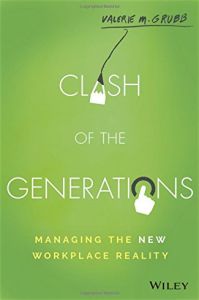Executive coach Valerie M. Grubb’s slim guide to employee engagement starts with the notion that you can cluster tens of millions of people into four broad categories according to age and then make important management decisions about them. But, to her credit, Grubb goes beyond age cohorts in her advice to managers. She insists throughout that every employee is different and requires individualized care, coaching, feedback and meaningful work. getAbstract finds that her well-researched, well-referenced report offers useful background for HR and leadership newcomers, but reports of outright generational conflict seem a bit exaggerated. And that’s good.
Four Generations at Work
The anticipated mass exodus of the baby boomers from the workforce never happened. Instead, boomers stayed put, delaying their retirement and setting up a potential clash with the generations behind them. Millennials now make up the largest cohort of employees in the United States. They work side-by-side with boomers, generation X and, very soon, generation Z – and will, for years to come. With four generations at work – each with separate values and work ethics – organizations face novel challenges and need creative solutions.
Compounding these challenges, many firms have not kept pace with employee expectations. Whatever their age, today’s talented workers expect more of a say in the way they work and what they do, so command-and-control management techniques no longer work. Due to poor choice of leaders or inadequate training, many firms lack managers with the skills to cope with these issues.
Managers’ first, most important work involves learning what engages and motivates each individual, and using that knowledge to maximize performance. Leaders should emphasize “diversity and inclusion,” so employees of all ages have a voice...



















Comment on this summary